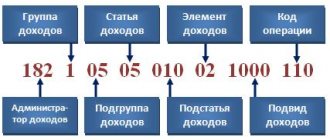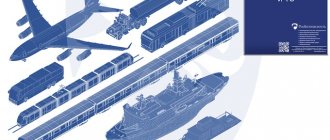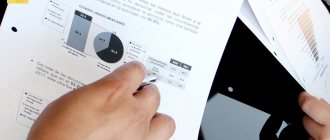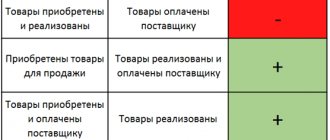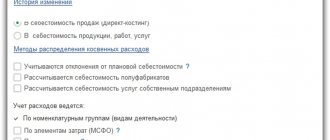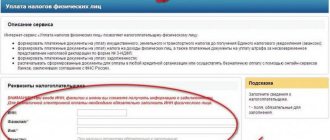In the 1C Accounting 8.3 program, the calculation of income tax and tax under the simplified tax system is automated, taking into account the trade tax, and the ability to prepare a notice of registration of retail outlets is also implemented. The 1C 8.3 program calculates sales fees for registered retail outlets on a quarterly basis.
Let's look at how to register retail outlets correctly and without errors in the 1C Accounting 8.3 program, calculate the trade fee and reflect it in the income tax return, as well as calculate and charge the trade fee under the simplified tax system.
Trade tax changes in 2021
Changes in the trading fee in 2021 compared to 2020 are small:
- In St. Petersburg and Sevastopol, a trade tax has not yet been introduced in 2021.
- The deflator coefficient has been increased from 1.379 to 1.420 for activities related to organizing retail markets.
- Trade tax rates have changed in 2021. Now in paragraph 2 of Art. 2 of the Law of the City of Moscow dated December 17, 2014 No. 62 “On the Trade Fee” we are talking only about delivery trade; delivery trade was excluded from it. The rate is still 40,500 rubles per object. A collection rate has been introduced for retail trade through vending machines - 4,900 rubles per quarter for one machine.
- Exemption from trade tax has been cancelled:
- retail trade through vending machines;
- retail retail trade through premises, buildings, structures under the operational management of autonomous, budgetary and government institutions;
- retail trade on the territory of the property complex of the managing organization of the agri-food cluster.
- The benefits for federal postal organizations have been clarified. Now such companies are exempt from paying the trade tax only in relation to the trade in postal envelopes, postcards, postal containers used for the provision of postal services, government postage stamps, and office supplies.
- Interregional fairs were exempted from the trade tax.
Who pays the trading fee?
The trade fee is regulated by Chapter 33 of the Tax Code and regulations of local governments and laws of federal cities. For Moscow, this is Law No. 62 “On Trade Fee” dated December 17, 2014. In other constituent entities of the Russian Federation, no trade fee was introduced in 2020.
An object through which trade is conducted is a building, structure, premises, stationary or non-stationary retail facility or retail outlet, through which the payer carries out activities in respect of which a fee is established (clause 4 of Article 413 of the Tax Code of the Russian Federation).
Trade tax is paid by companies and individual entrepreneurs who trade in Moscow:
- through stationary retail chain facilities without sales areas (except gas stations).
- through objects of a non-stationary trading network,
- through stationary retail chain facilities with trading floors,
- through the release of goods from the warehouse.
A trading network is a combination of two or more objects, but for the purpose of imposing a trade tax, the number of points does not matter. The fee must be paid even from one store or kiosk.
Trade fee: 10 clarifications from the Federal Tax Service and the Ministry of Finance
Filling out the OKTMO code when paying the trade fee
Where to look for clarification: letter of the Federal Tax Service of Russia dated September 15, 2015 No. GD-4-3/16205
In the letter dated June 26, 2015 No. GD-4-3 / [email protected] the Federal Tax Service said that the code of the inspection territory must be entered in payment slips, in which the company or entrepreneur is registered as a payer of the trade tax.
However, the letter dated 09.15.15 No. GD-4-3/16205 contains clarifications: when paying the trade tax at the location of the real estate property, it is necessary to indicate the OKTMO code at the place of trade activity, and not at the place of registration as a trade payer collection
Reflection of the amount of trade tax in the income tax return
Where to look for clarification: letter of the Federal Tax Service of the Russian Federation dated August 12, 2015 N ГД-4-3/ [email protected]
The Federal Tax Service explains in detail how to reflect the amount of the trade fee in the income tax return in letter No. GD-4-3/14174 dated August 12, 2015. The same document provides examples of filling out reports.
Incorrect submission of notice of registration as a trade tax payer
Where to look for clarification: letter of the Federal Tax Service of Russia dated August 20, 2015 No. GD-4-3/ [email protected]
In a letter dated August 20, 2015 No. GD-4-3/ [email protected], the Federal Tax Service recommends that taxpayers in such a situation submit an application to the relevant tax authority (written in any form).
Information that must be indicated: name of the organization (full name (if any) of the individual entrepreneur), TIN, reasons for submitting the application. Copies of the erroneously filed notice are also supported.
Trade by releasing goods from a warehouse and trade through a stationary retail chain - what is the difference?
Where to look for clarification: letter of the Ministry of Finance of the Russian Federation dated July 15, 2015 No. 03-11-10/40730
In a letter from the Ministry of Finance of the Russian Federation, a warehouse is defined as a building (structure, structure) or part of it where inventory items are stored.
A warehouse is recognized as an object of a stationary retail chain if its area includes premises for displaying and demonstrating goods, servicing customers and conducting cash settlements with them, as well as the passage of customers. Consequently, if a warehouse does not meet these requirements, then it is not recognized as an object of a stationary trading network.
Trade fee and online trading and delivery of goods by courier, official transport or mail
Where to look for clarification: letter of the Ministry of Finance of the Russian Federation dated July 15, 2015 No. 03-11-10/40730
The letter from the Ministry of Finance of the Russian Federation clarifies: if, when carrying out trade using the delivery of goods, it is impossible to determine the area of the retail facility from which delivery is carried out, then this type of activity does not fall under trade activity in the form of trade through retail chain facilities.
The letter concludes that trade involving the delivery of goods ordered via the Internet or by telephone is recognized as trade that is carried out by releasing goods from a warehouse.
Office as an object of trade
Where to look for clarification: letter of the Ministry of Finance of the Russian Federation dated July 15, 2015 No. 03-11-10/40730
The area of a retail facility is a premises intended for displaying, demonstrating goods, servicing customers and making cash payments to them when selling goods, as well as for the passage of customers (Article 2 of the Law on Trade Activities), as specified in the letter of the Ministry of Finance of the Russian Federation dated July 15, 2015 No. 03-11-10/40730.
Conducting trading activities in an office is not subject to taxation if:
- the office does not meet the requirements for a retail facility;
- an office cannot be recognized as a building, structure, premises or retail outlet through which activities are carried out in respect of which a trade fee has been established.
Reflection of the amount of trade duty by a foreign company in its income tax return
Where to look for clarification: letter of the Federal Tax Service of Russia dated September 28, 2015 No. GD-4-3/ [email protected]
Foreign organizations that operate in Russia through permanent representative offices are taxpayers of corporate income tax and may be recognized as payers of trade tax.
If a taxpayer carries out an income tax type of business activity in respect of which a trade tax has been established, the taxpayer has the right to reduce the amount of corporate income tax credited to the consolidated budget of a constituent entity of the Russian Federation, which includes a municipal entity (today the budget of Moscow), in in which the specified fee is established, for the amount of the trade fee actually paid from the beginning of the tax period until the date of payment of the tax. Basis - clause 10 of Art. 286 Tax Code of the Russian Federation.
Since the tax return for the income tax of a foreign organization does not have fields to reflect the trade tax, questions may arise on how to fill it out. The form was approved by order of the Ministry of Taxes and Taxes of Russia dated January 5, 2004 No. BG-3-23/1.
The letter dated September 28, 2015 No. GD-4-3/ [email protected] of the Federal Tax Service of Russia explains in detail how to fill out a tax return when paying a trade tax before making appropriate changes to it.
Reduction of tax according to the simplified tax system on trade fees
Where to look for clarification: letter of the Ministry of Finance of the Russian Federation dated July 15, 2015 No. 03-11-10/40730
A taxpayer who applies the simplified tax system with the object of taxation “income” and carries out activities in respect of which a trade tax is established, can reduce the amount of tax according to the simplified tax system for the object of taxation from the specified type of business activity, credited to the consolidated budget of the subject of the Russian Federation, which includes the municipality, in which the trade fee is established, in the amount of the trade fee paid during the tax (reporting) period. Basis - clause 8 of Art. 346.21 Tax Code of the Russian Federation.
The tax reduction on the amount of the trade fee is made in addition to the reduction amounts established by clause 3.1 of Art. 346.21 Tax Code of the Russian Federation. But the tax cannot be reduced by more than 50% by the amount of these expenses.
The Ministry of Finance in a letter explains whether it is possible to apply a limit of 50% of the tax amount when deducting trade fees from tax amounts under the simplified tax system. Answer: only for the purposes of clause 3.1 of Art. 346.21 Tax Code of the Russian Federation. Consequently, those who apply the simplified tax system with the object of taxation “income” can reduce the tax on expenses, which are named in paragraph 3.1 of Art. 346.21 of the Tax Code of the Russian Federation, but not more than 50%, and in the amount of the trade fee.
Catering services and sales tax
Where to look for clarification: letter of the Ministry of Finance of the Russian Federation dated July 15, 2015 No. 03-11-10/40730
Catering services are not trading activities for the purposes of Sec. 33 of the Code. The sale of purchased products is not recognized as a trading activity if it is an integral part of such services.
The letter clarifies that “the determination of the object of trade Ch. 33 of the Code is tied to the implementation of the type of activity in respect of which the trade fee is established at this facility.” Based on this, public catering facilities, if only public catering services are provided with their use, are not recognized as objects of trade for the purposes of Chapter. 33 of the Code.
The retail market includes areas not used for trade. How to calculate the trading fee?
Where to look for clarification: letter of the Ministry of Finance of the Russian Federation dated July 15, 2015 No. 03-11-10/40730
The retail market is a property complex for the sale of goods (performance of work, provision of services) on the basis of prices freely determined directly at the conclusion of retail sales contracts and household contracts; it includes trading places (Article 3 of the Federal Law of December 30, 2006 No. 271-FZ “On retail markets and on amendments to the Labor Code of the Russian Federation”).
When calculating the trade fee, the total area of the retail market is taken into account, which is determined on the basis of all areas indicated in the inventory and title documents.
Expert comments:
Who will pay the trading tax from 2015?
Do small optoelectronics manufacturing enterprises in Moscow have to pay a trade tax?
When do you need to register as a trade tax payer?
Watch the webinar about the trading fee
Find out more
What should you do if a trade tax has been introduced?
Companies that begin trading activities after the Law “On Trade Fees” comes into force must submit a notification in Form No. TS-1 within 5 business days from the date the subject of the fee arises.
In the notification, provide information about the subject of the levy:
- Kind of activity,
- object of trade: fixed network, delivery or carry-out trade,
- characteristics: number of retail facilities and (or) area of premises.
You also need to notify the inspectorate every time your operating conditions change that affect the amount of the sales fee. The deadlines are the same - 5 working days from the date of changes.
If you do not submit a notification on time, you face a fine of 200 rubles under clause 1 of Art. 126 of the Tax Code of the Russian Federation, and the inspectorate can fine officials in the amount of 300 to 500 rubles (Part 1 of Article 15.6 of the Administrative Code).
Calculation of sales tax and its reflection in expenses under the simplified tax system with the object “Income minus expenses”
The amount of the trade fee is taken into account when calculating the simplified tax system. When the simplified tax system is used with the object “Income minus expenses,” the amount of the paid trade fee is included in expenses (clause 22, clause 1, article 346.16 of the Tax Code of the Russian Federation).
The calculation of the trading fee in 1C 8.3 is performed by the regulatory operation “Closing the month. Calculation of trade fee":
Document movements and postings for trade fees:
The transfer of the trade fee is registered by the document “Write-off from a personal account”, type of operation “Payment of tax”:
Document movements in accounting:
In NU, in section I of KUDiR, an expense is recorded for the amount of the paid trade fee:
Where to submit the notification?
Owners of stationary stores with and without sales floors and owners of retail markets submit a notification to the Federal Tax Service at the location of the store.
Owners of mobile stores, tents and other movable retail outlets inform the Federal Tax Service at the place of registration of the company or place of residence of the individual entrepreneur.
If there are several points of sale, send a notice of registration to the address of the facility that comes first in the list of points of sale.
If an organization or individual entrepreneur is registered in another region, but trades in Moscow, they must also register as payers of the trade tax. In this case, a notification is also submitted to the Moscow Federal Tax Service at the location of the store if trade is carried out through a real estate property. And when trading through movable property - to the Federal Tax Service of the region in which the entrepreneur or organization is registered.
Within 5 days after submitting the notification, tax authorities will register the company and send a certificate.
How much and when to pay?
Trade tax rates are contained in the text of the municipal law. They are different for stationary and non-stationary trading. Rates for stationary trading depend on the type of activity, the area of the trading floor and its location. They can be found in Art. 2 of the Law of Moscow dated December 17, 2014 No. 62.
The trading fee must be calculated and paid for each object that an organization or entrepreneur uses in trading activities.
Trade Fee = Trade Fee Rate - for the following categories:
- trade through a stationary trade facility without a sales area (except for gas stations);
- non-stationary retail facility;
- a stationary retail facility with a hall area of up to 50 m2;
- delivery retail trade;
- retail trade through vending machines.
Trade fee = Sales fee rate per 1 m2 of area × area - for the following categories:
- trade through stationary retail network facilities with an area. hall more than 50 m2;
- organization of trade through retail markets.
Experts from the Ministry of Finance propose to determine the retail space, guided by the chapter of the Tax Code on the patent taxation system (clause 5 of Article 415 of the Tax Code of the Russian Federation).
The trade fee must be paid quarterly no later than the 25th day of the month following the end of the tax period. The deadlines for payment of the trade tax in 2021 are April 26, July 26, October 25 and January 25, 2022.
How to reduce taxes on trade duty?
Taxpayers on OSNO reduce the income tax in the regional part by the amount of the trade fee. But the Fee is not included in expenses like other taxes, but reduces the income tax itself or the advance payment on it. To reduce income tax, you need to pay the fee before the tax payment deadline (advance payment) established by law. For example, if you paid the fee for the 4th quarter of 2021 in January 2021, then the tax for 2021 or the advance payment for the 1st quarter of 2021 can be reduced by the amount of the fee.
If the amount of the fee turns out to be more than the income tax, then the fee can be taken into account only within the limits of the tax amount. In this case, you will not have to pay tax, and the unaccounted amount of the fee can be transferred to future reporting periods, as well as reduce the tax for the year. The fee cannot be transferred to the next year (Article 286 of the Tax Code of the Russian Federation).
The simplifiers on “Revenue” subtract the trade fee from the amount of the single tax if the trade fee and the tax are paid in the same region. The fee is included in the tax deduction along with insurance premiums, sick leave, etc. The fee can be taken into account only within the amount of tax (advance) for trading activities, which has already been reduced by insurance premiums and other deductions. It is impossible to receive compensation from the budget if the fee exceeds the amount of tax after deductions. Also, the difference cannot be deducted from taxes on other types of activities. At the same time, the 50% limit, which prohibits organizations and individual entrepreneurs with employees from reducing the tax under the simplified tax system by more than two times, does not apply to the trade tax.
For simplifiers with the object “income minus expenses,” the list of expenses includes “fees paid in accordance with the legislation on taxes and fees . The trade tax satisfies this condition, so it can be included in expenses when calculating the single tax. It is not the single tax that will be reduced by the amount of the trade tax, but the costs of calculating it. Take it into account when you actually paid the fee.
An individual entrepreneur reduces personal income tax by the amount of trade tax if trading activities were carried out in the region where he is registered as an individual entrepreneur. When calculating personal income tax at the end of the year on income taxed at a rate of 13%, you can reduce the tax by the amount of the trade tax paid. Keep in mind that you need to reduce the entire amount of personal income tax without deducting advance payments. They must be subtracted from the amount of tax remaining after the reduction by the amount of the fee. If the fee exceeds the personal income tax, the balance is not returned and is not carried forward to future tax periods.
If a company paid 100,000 rubles in profit tax and now has to pay 10,000 rubles in trade tax, then it will pay 90,000 rubles in profit tax and 10,000 rubles in trade tax. In this case, the tax burden of a bona fide taxpayer will not change.
Calculation and accrual of trade tax and its reflection in the income tax return
The income tax can be reduced by the amount of the Trade Tax actually paid before the date of payment of the income tax (Clause 10, Article 286 of the Tax Code of the Russian Federation).
The calculation of the trading fee in 1C 8.3 is carried out quarterly by the regulatory operation “Closing the month. Calculation of trade fee":
Document movements:
Payment of the trade fee in 1C 8.3 is registered using the document “Write-off from a personal account” - operation “Payment of tax”:
Document movements in accounting and postings for trade fees in 1C 8.3:
The calculated and paid trade fee is indicated in Sheet 02:
- pp.265 – 267;
- Appendices No. 5 – pp. 095 – 097;
- Appendices No. 6 – pp. 095 – 097.
In particular, Sheet 02 indicates:
Reflection in Sheet 02 of the trading fee:
